/2HR
In the museum, through the innovative equipment and brief introductions of historical sites, visitors can learn about the culture and lifestyle of the Paiwan people in southern Hengchun Peninsula. Fully prepared, following the footsteps of the guide, visitors can step into historical scenes and revisit the key moments of the past. They can also consider, if they were to travel back in time, what choices they would make when facing this situation.
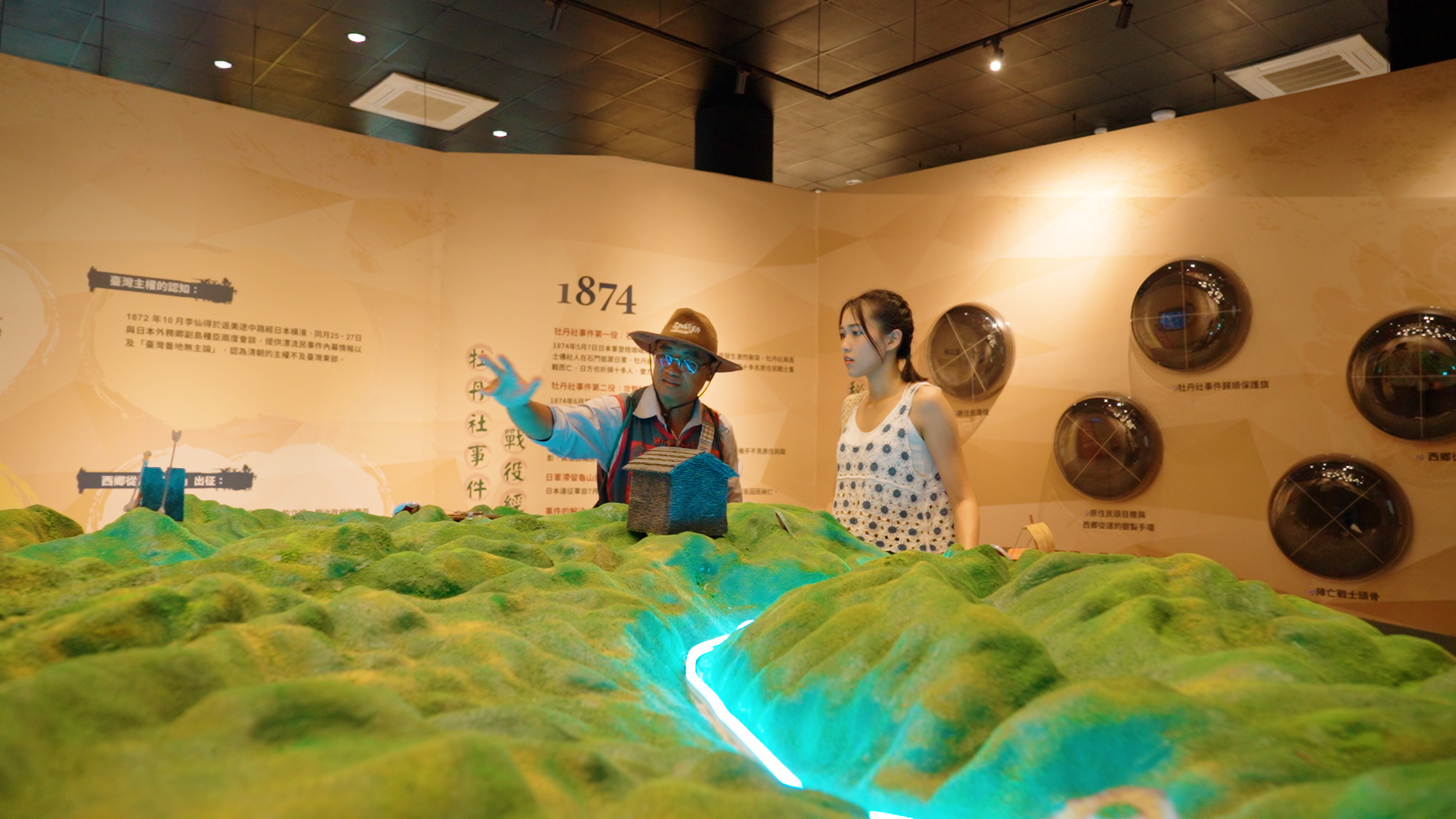
The most prominent landmark in the park is the statue of Aruku father and son, but how can you tell who is the father and who is the son? The mystery behind this is left to be explained on site. Behind the statue of Aruku father and son, there are nine story walls, detailing the life of the tribe, the encounter of ethnic groups...to the Japanese invasion and its impact on future generations, all of which are meticulously researched and explained. Friends who are interested in this history can not only learn from the story walls, but also listen to the perspective of the tour guide on how this history is narrated.
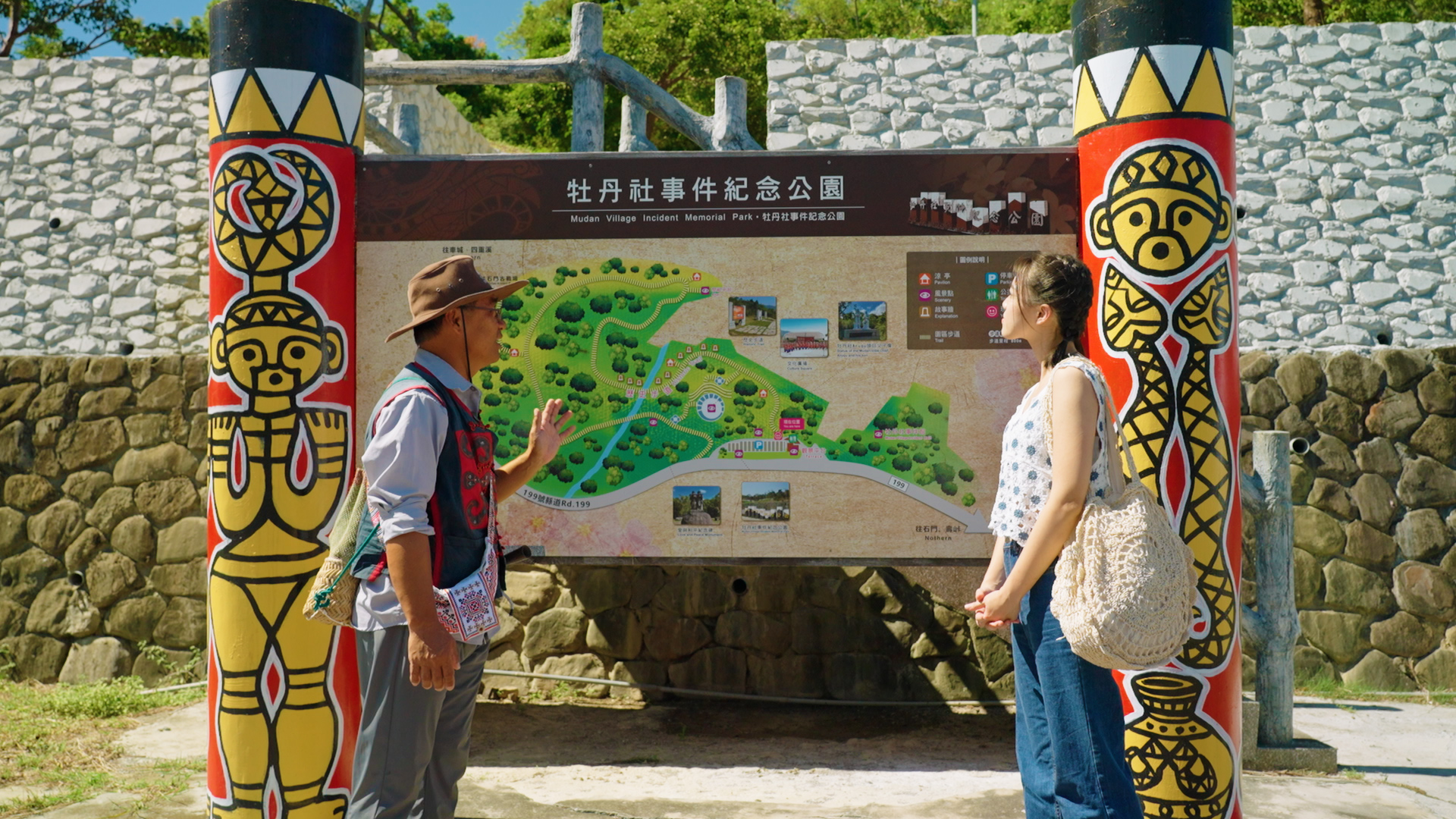
The "Ryukyu Castaways Incident" in 1871 led to the unfortunate deaths of 54 Ryukyuans who washed ashore in Yayoi Bay after a shipwreck, encountering various misunderstandings that cost them their lives. This incident triggered the "Mudan Incident," which was a catalyst for Japan's military expedition to Taiwan. After many years, to dispel misunderstandings and hatred, in 2005, the Mudan Township people traveled to Ryukyu for the "Love and Peace Century Reconciliation" exchange activities, expressing goodwill to the Ryukyuan bereaved families. Together, they erected this monument, symbolizing eternal love and peace. Another monument stands at Shimoji Island's "Shimoji Junior High School." In March 2023, to allow more residents and visitors of Miyako Island to understand this history, it was relocated to "Kamamamine Park."
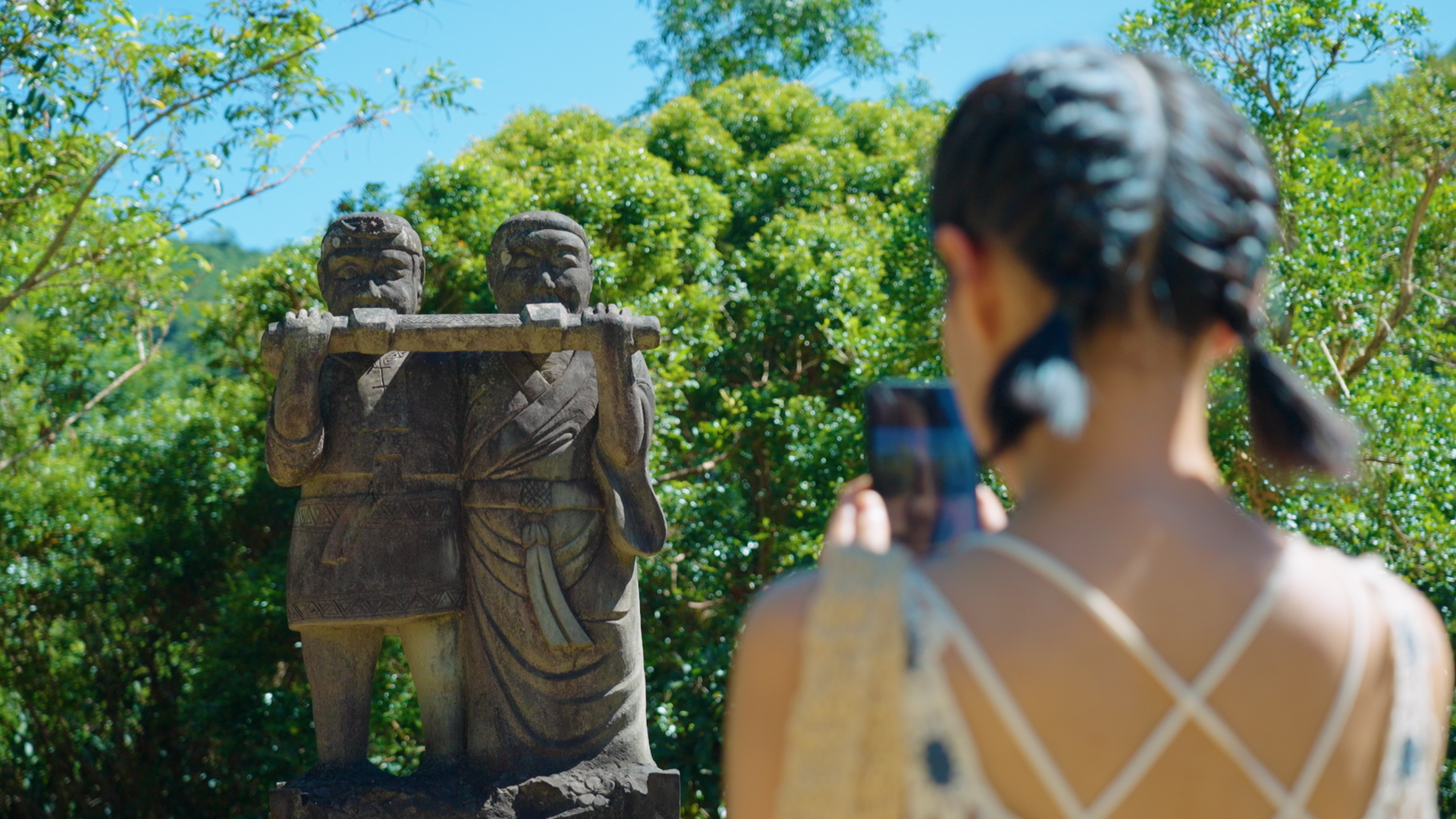
The trail from the Budansha Memorial Park to the Shimen Tianxian Trail is filled with many rare plants. The guide will help you understand these plants better, which have been passed down through ancestral wisdom and have various uses related to daily life, such as food, medicine, mosquito repellent, charcoal material, natural dye, bow and arrow material, etc. Would you like to see what a "burden of guilt" looks like? Do you want to know what delicious desserts can be made from gardenia flowers? And what leaves can be used as emergency toilet paper? Along the way, these plants will bring you various surprises!
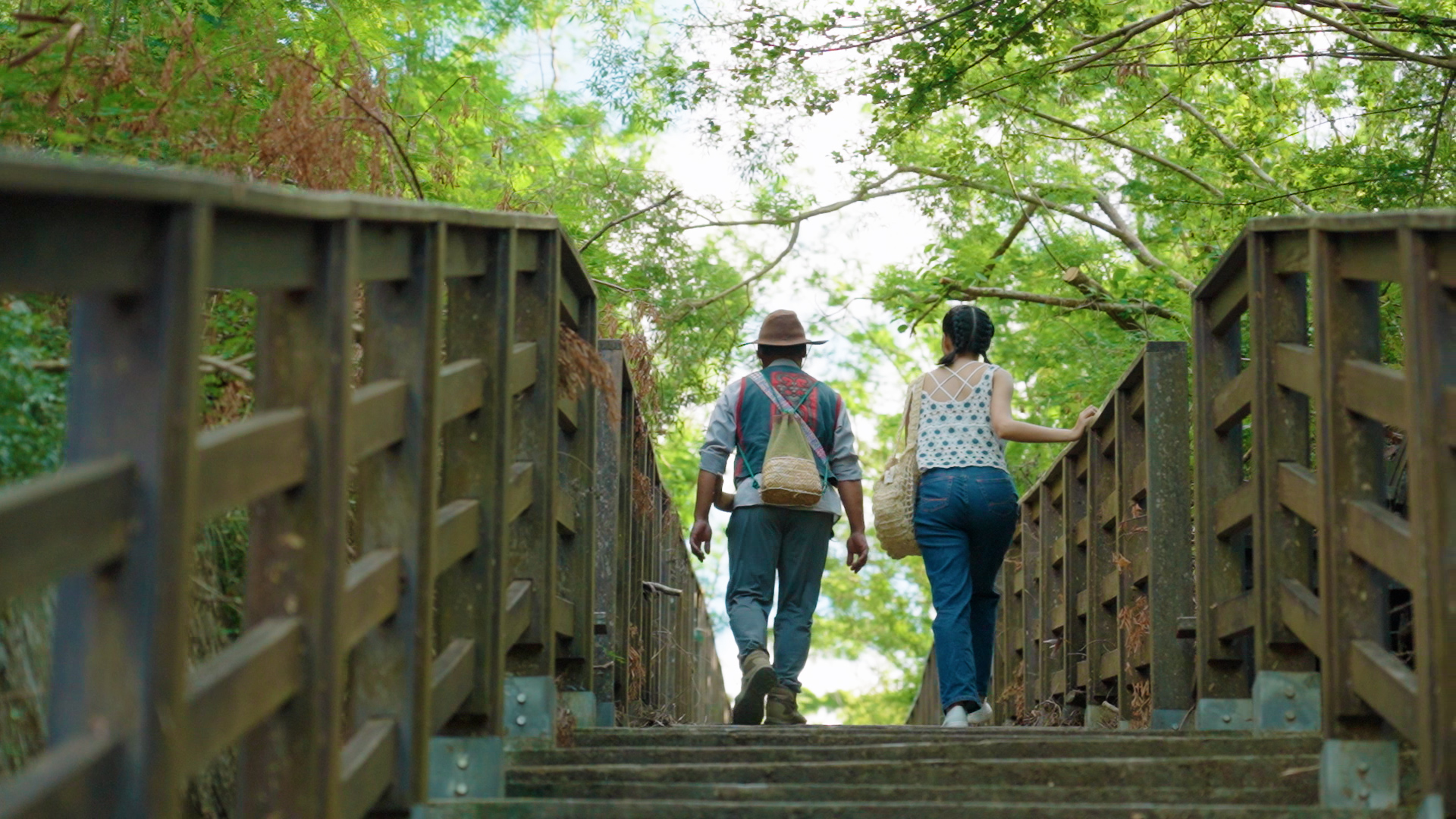
Traveling along County Road 199, when you see this arch in front of you, it indicates that you have arrived at the entrance of Peony Township, which is also the central location of the so-called "Shimen Tianxian". The imagery at the entrance of Peony Township presents many cultural connotations of the Paiwan tribe, such as the hundred pace snake, sun pattern, glass beads, pottery, connected cups, wild peony flowers, and more. Each image has its own meaning behind it. Let's take a photo here together, so you can explain to your family and friends when you go back, showing off your rich cultural knowledge~
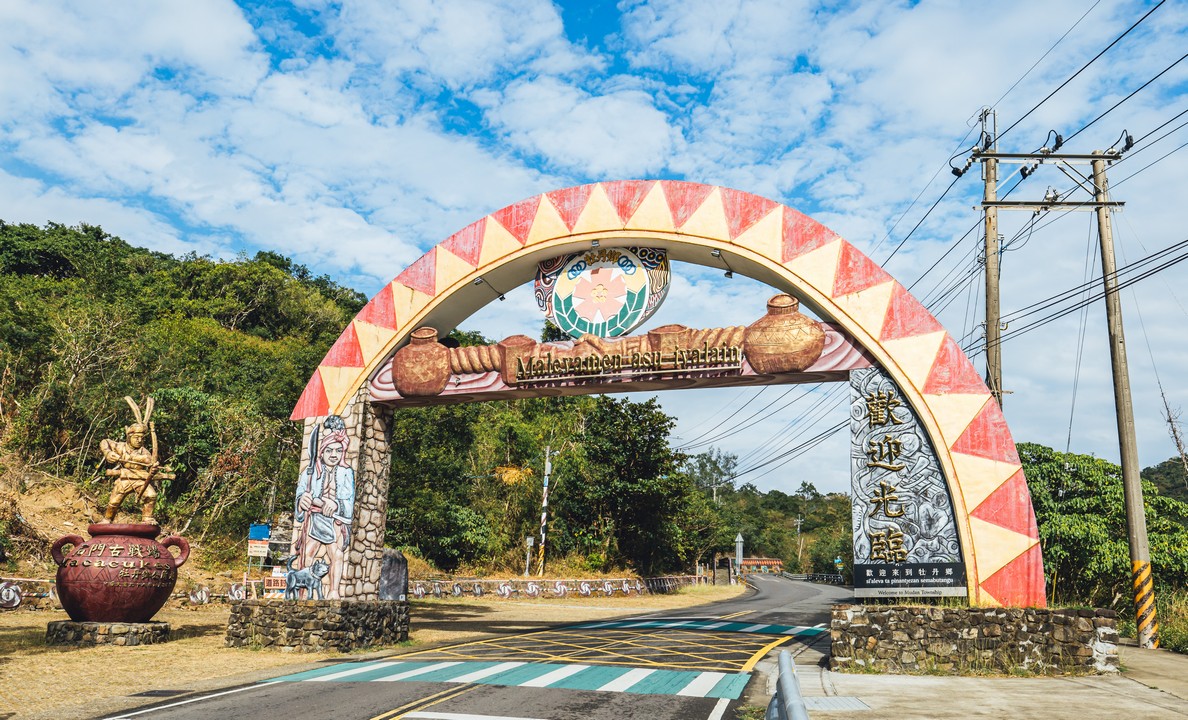
Entering Peony Township along County Road 199, the magnificent Stone Gate Gorge comes into view. The Stone Gate Gorge, or "macacukes" in the Paiwan language, meaning "mutual support," refers to the dangerous cliffs where two mountains face each other, symbolizing mutual support and defense against external threats. Next to it is the Sichong River. Why is it called Sichong River and not Sanzhong River or Erzhong River? And why is this place called Shamu Mountain? Listen to the guide's lively and interesting explanations of the stories behind these names!
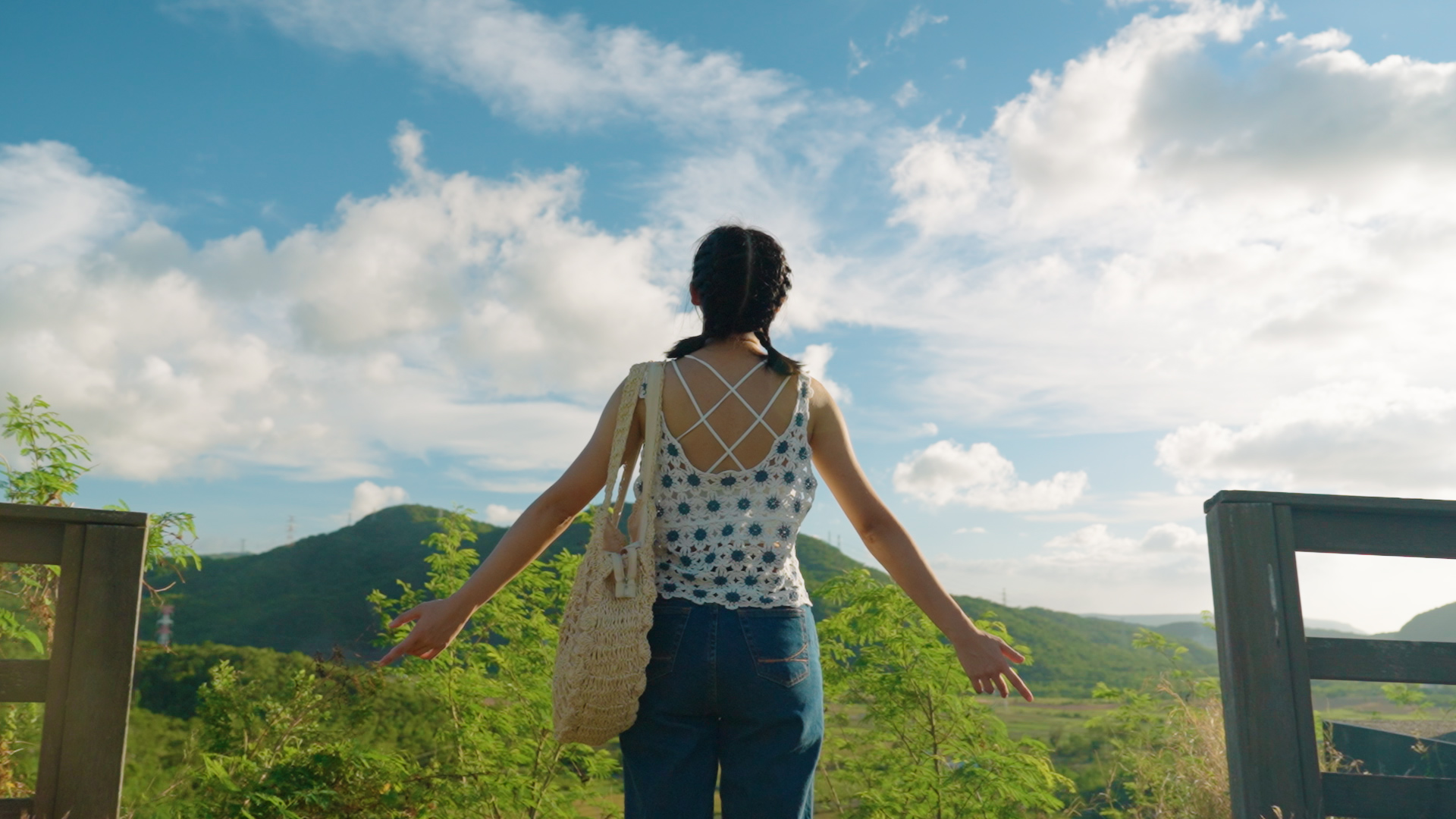
Friends who have climbed to the top after overcoming layers of stairs cannot help but notice this sword-shaped monument standing on the mountain top, inscribed with the words "Monument to the Remains of Governor Saijo." It faces the gateway to the Shimmon Mountain Danger and was built in 1936. Why was this monument built here? Who was Governor Saijo? And why did the inscription undergo three changes? Let the professional guide explain these questions to you one by one! We know that no matter how the inscription and time change, the determination of the indigenous people to protect their homeland and their spirit of bravery in facing the enemy remain unchanged.
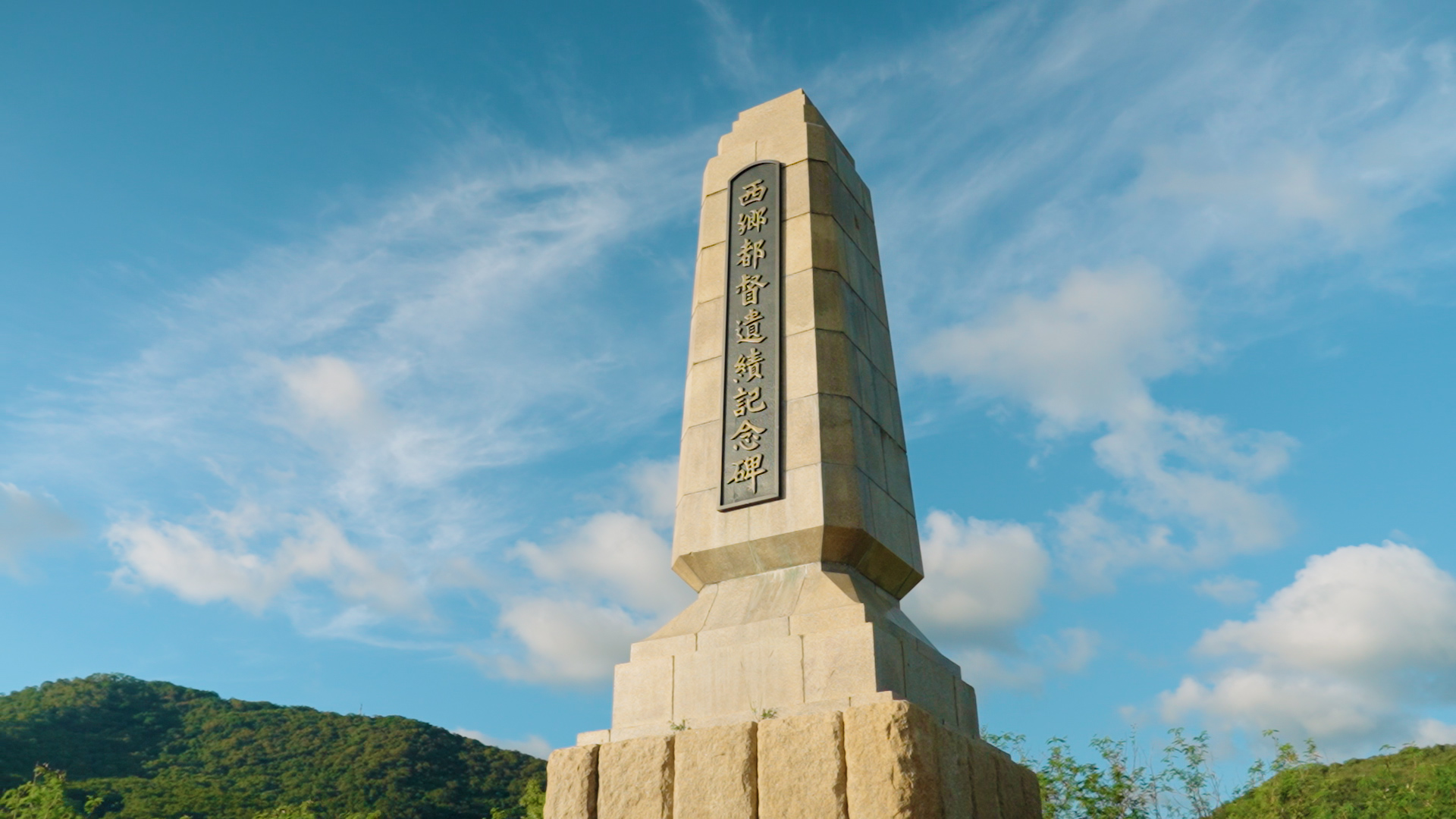
The Mudan Incident, which occurred in 1874, is an important event in modern Taiwanese history that had a significant impact on the destinies of Taiwan, Ryukyu, the Qing Dynasty, and Japan. Why was Langqiao considered an "alien land" by the Qing Dynasty? And why did Li Xiande in "Scarborough" describe it as "not on God's map, where He cannot hear your prayers"? What misunderstandings, calculations, and conflicts arose between the indigenous people, the Qing Dynasty, the Japanese, and the Americans who lived there? Through professional guides, you can break away from the cold, textbook content and see different perspectives, understand the course of events, and let us actually step into the historical scene to explore this major event that took place in southern Taiwan 150 years ago!
●Reminder to friends participating in the event, don't forget to bring sun protection, windproof clothing, hats or rain gear, water, and take personal protective measures.
●Group size: 1-15 people
●Remittance Information:
Changhua Commercial Bank, Hengchun Branch
Account Number: 8348-04-95228-8-00
Account Name: Collection on behalf of Mudan Township Office
●Contact Information:
Please contact the Agricultural Observation Section of Mudan Township Office at 08-8831223 (Monday to Friday, 09:00-17:00)
Website: https://www.pthg.gov.tw/townmdt/
Mudan Heart Travel Facebook Page: https://linktr.ee/mudan.travel
Mudan Heart Travel Website: https://www.mudan-xin.com/